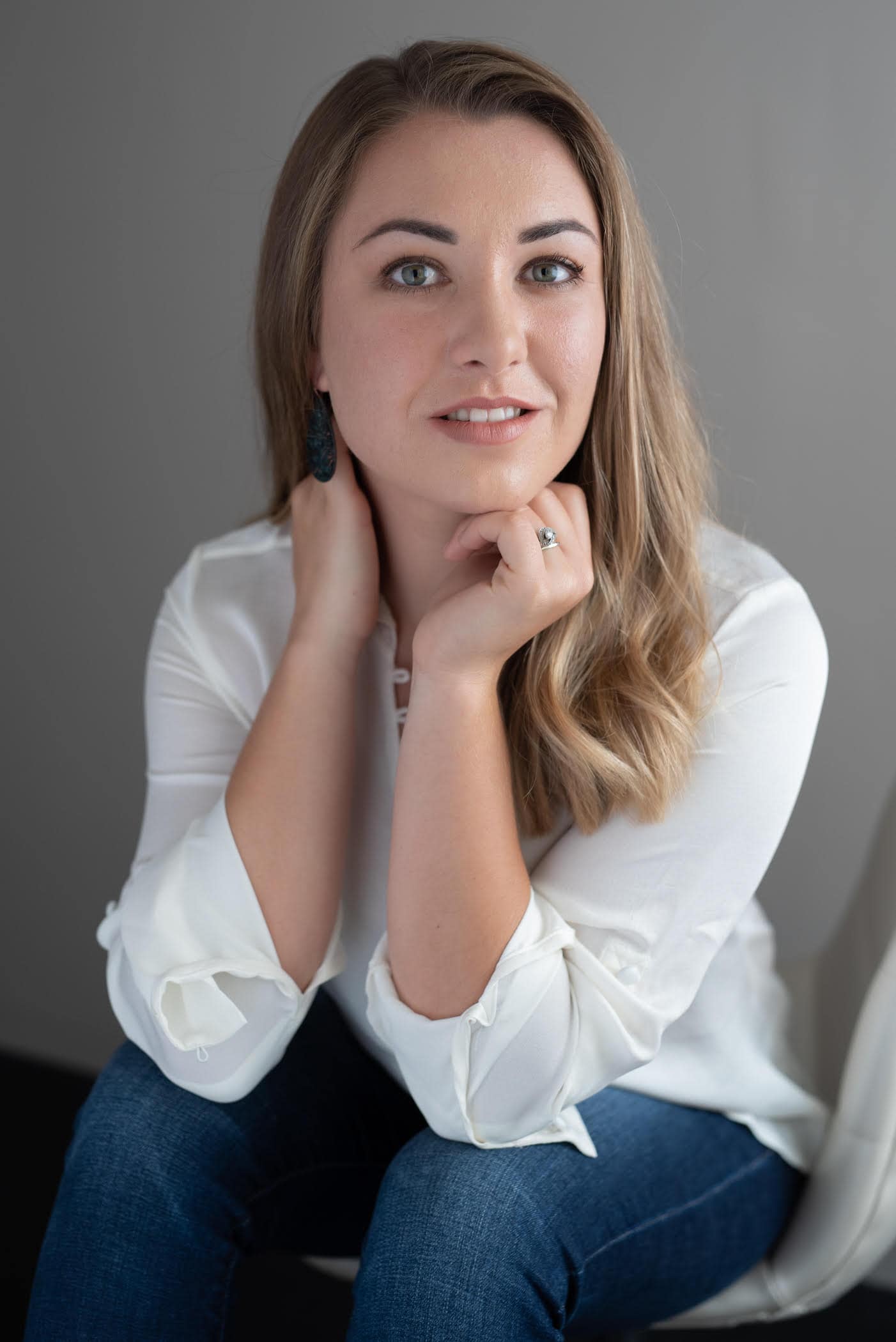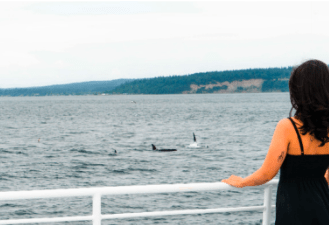
Sunday Brunch with...Jennifer Gold
Happy Sunday!
Today we are so glad to have a lovely author who will soon release her second novel. She was so kind to send me an ARC of her first novel, The Ingredients of Us, last year, and I loved every page of it, so I was so curious about reading her new book, and finally, my wish has been granted.
This Sunday, we can know more about Keep Me Afloat, which releases on March 3, published by Lake Union.
Our talented author today is…
Jennifer Gold

She writes book club fiction about the relationships of real, flawed women — love, past mistakes, redemption, and all the stuff in between. Critics at Booklisthave called her characters“multifaceted” and her storylines“compelling” and “bittersweet.”Jenni is a travel-obsessed romantic and ambivert.
When she’s not writing, you can find her sipping coffee, enjoying the outdoors, or curled up with a book. She loves nature documentaries and realistic hopefully-ever-afters. Jenni lives in the Pacific Northwest with her husband and two cats.
Keep Me Afloat is about a marine biologist — what kind of research did you have to do for your character?
Before I became an author, I wanted to be a marine biologist. Growing up on the Olympic Peninsula of Washington, I saw my fair share of marine animals large and small. This book was born out of my deep love and appreciation for Pacific Northwest marine habitats—it was the perfect opportunity for me to nerd out about marine biology. As far as research goes, I knew a lot already from this lifelong interest. But for the book, I had to familiarize myself with the Puget Sound on a level I hadn’t explored before. I studied maps, marine mammal taxonomy, and relied heavily on books I had collected over the years—especially books on the Southern Resident Killer Whales, a local population that have been studied closely for decades. In addition to websites and books, I also took advantage of local experts and resources, including the Port Townsend Marine Science Center, the Whale Museum in Friday Harbor, and the Puget Sound Express whale watching tour company.
What about the Pacific Northwest inspires you most? What was the most challenging thing about writing a book that takes place in your hometown?
The Pacific Northwest is an endless source of inspiration. I often find myself inspired just driving places. Living here, I’m surrounded by farmland, ocean, mountains, and islands—dramatic settings that lend themselves to stories, emotions, and endless interpretations.
Writing about my hometown was another challenge entirely. On the one hand, I know Port Townsend intimately, because I grew up there; I was able to bypass some aspects of setting research, because I already knew the street names and more ineffable qualities of the town. That said, my decision to fictionalize popular businesses was a strategic creative choice—I needed some distance from the real place in order to achieve creative freedom within the story. I suppose the hardest part, really, was doing the town justice. It’s a lovely, quirky, magnificent place—I tried really hard to capture it accurately, while also indulging some fictional liberties.
One of the major themes in the book is forgiveness. What compelled you to write about mistakes and second chances?
For one, I love the drama in those themes. We all make mistakes. We have all had to ask for forgiveness—or forgive someone ourselves. I think it’s only realistic to have my characters grapple with the same issues.
In The Ingredients of Us, my main character Elle had made mistakes, but she was never really the “bad guy” of the story. In Keep Me Afloat, I wanted to write about a character who had made a profound mistake. Could I make her believable, sympathetic, and ultimately redeeming? It’s not an easy thing to pull off, but I think the dual timeline helps the reader understand Abby’s frustration. I think her guilt, especially, makes her compelling and more three-dimensional.
No matter how many times I write about forgiveness, I think it’ll always come out differently. Forgiveness is such a personal, contextual thing. It’s endlessly interesting. I always say that writing (and reading!) is an exercise in empathy. The more we think about and explore mistakes and second chances, the more equipped we are to navigate them in real life.
The book also explores emotional infidelity — what brought you to this topic?
This aspect of the book surprised me. When I started the first draft, I didn’t think emotional infidelity would become an underlying theme. It’s one way that writing can be surprising. The characters sort of took on a life of their own in that regard. But again, going back to mistakes and second chances, I think it’s easy to see how Abby was on a slippery slope. The dual timeline definitely helped bring this plotline into sharper focus.
In one way or another, we all rely on people for emotional support—whether on our romantic partners, or in a more platonic manner. I love writing about blurred emotional lines, so when this plotline emerged, I had to follow it.
The evolution of friendships and the parent/child relationship also play a major role in the book — how much of this is from personal experience?
“Personal experience” is a tricky subject. As a fiction writer, I like to remind people that my books are not from personal experience. However, we have all experienced the basic emotions that occur in all fiction: love, anger, betrayal, yearning, et cetera.
As a twenty-something married person, I definitely relate to some of the relationship dynamics that Abby navigates with her parents and friends. I think it’s common for those relationships to change as you grow—I definitely pulled inspiration from real life when examining how Abby might grapple with her parents’ relationship struggles and her friends entering a new chapter of their lives…but again, it’s fiction— none of it is based on real people.
What was the most difficult aspect of writing a book with two timelines?
Dual timeline books are always tricky—especially when it comes to keeping information straight. Two timelines result in two separate arcs of character development (for instance, my main character changes emotionally in the past timeline and the present timeline) and two separate opportunities for conveying (or withholding) information to the reader.
In the case of Keep Me Afloat, I had to be careful about managing consistent emotional growth for many characters across both timelines, as well as deciding when to tell the reader about certain facts, traits, and events. All while keeping in mind that the calibration of these elements in one timeline will always carry a ripple effect through the other timeline. (Am I making sense?)
It takes quite a bit of mental gymnastics—anyone who follows me on Instagram knows it also takes quite a lot of index cards!
Thanks for sharing all of this with us, Jenni, but before letting you go, could you share another sneak peek behind the scenes of Make Me Afloat?
This photo is a behind-the-scenes glimpse into the photoshoot for the cover of Keep Me Afloat. Before my publisher decided on the final cover image (a woman walking on the beach), they organized a photoshoot on a whale-watching boat for some preliminary cover concepts. During the photoshoot on the boat—which occurred just north of Seattle—a small pod of wild orcas made an appearance! This photo is a candid of the cover model with the orcas in the background. When I heard about the whale sighting, I couldn’t believe it. Since the book is about whales, I found it so incredibly fitting (and perhaps a good omen?) that the whales showed up to the photoshoot.
Giveaway
Thanks to Jennifer, we have a signed copy of Keep Me Afloat to give away. To enter, check @cometreadingsbooktours on Instagram:
https://www.instagram.com/p/B7JQVoZALgf/

